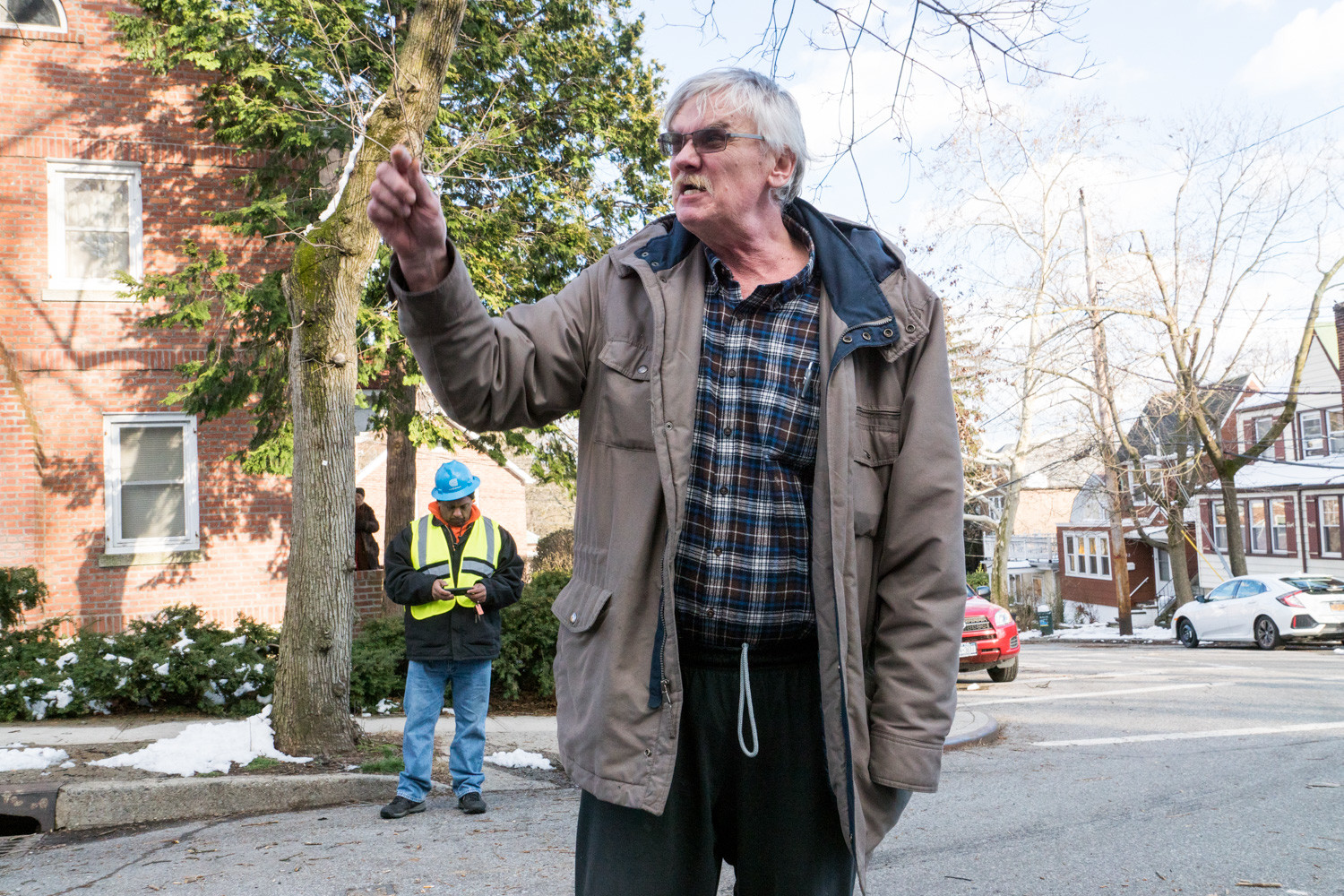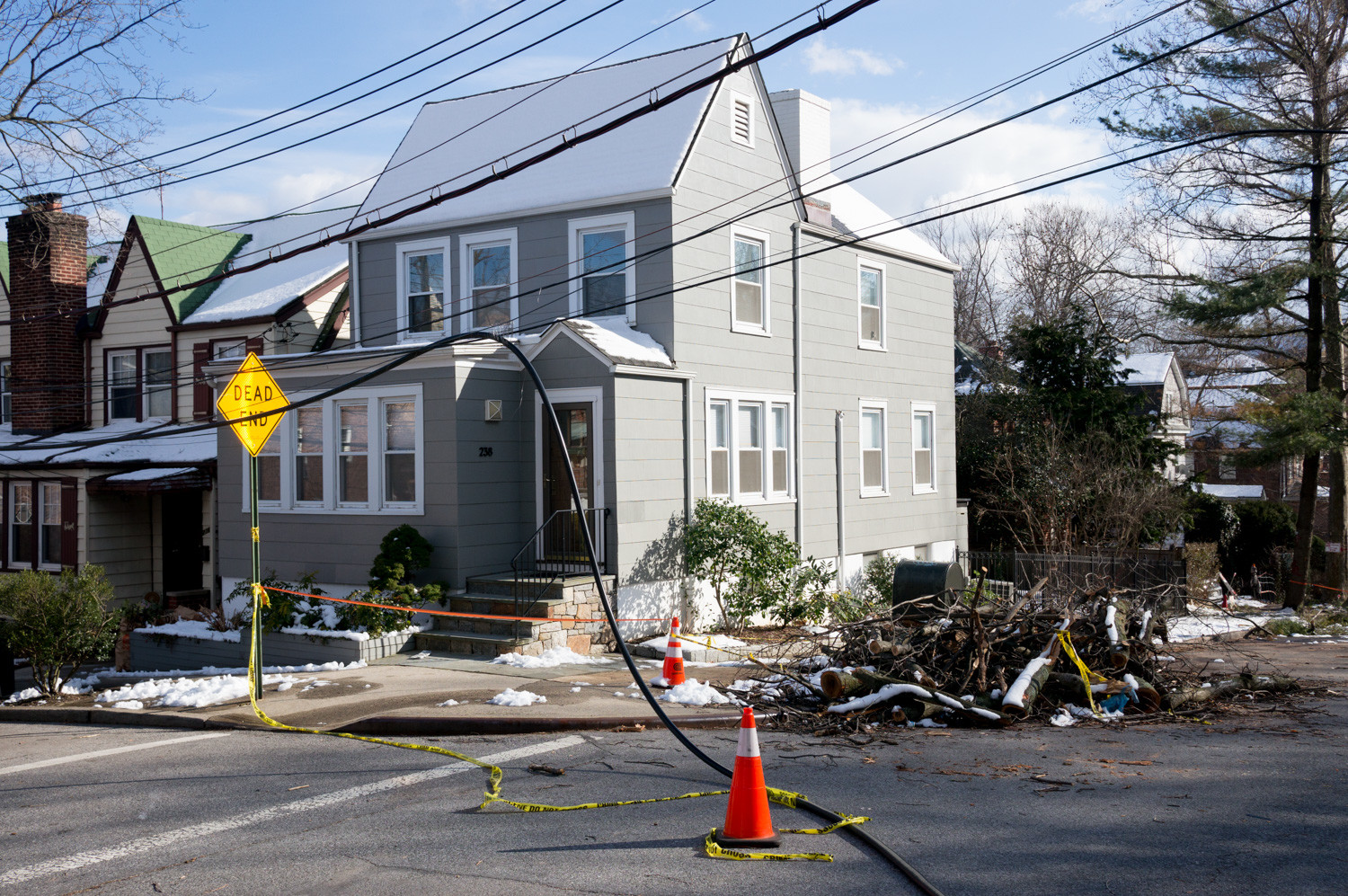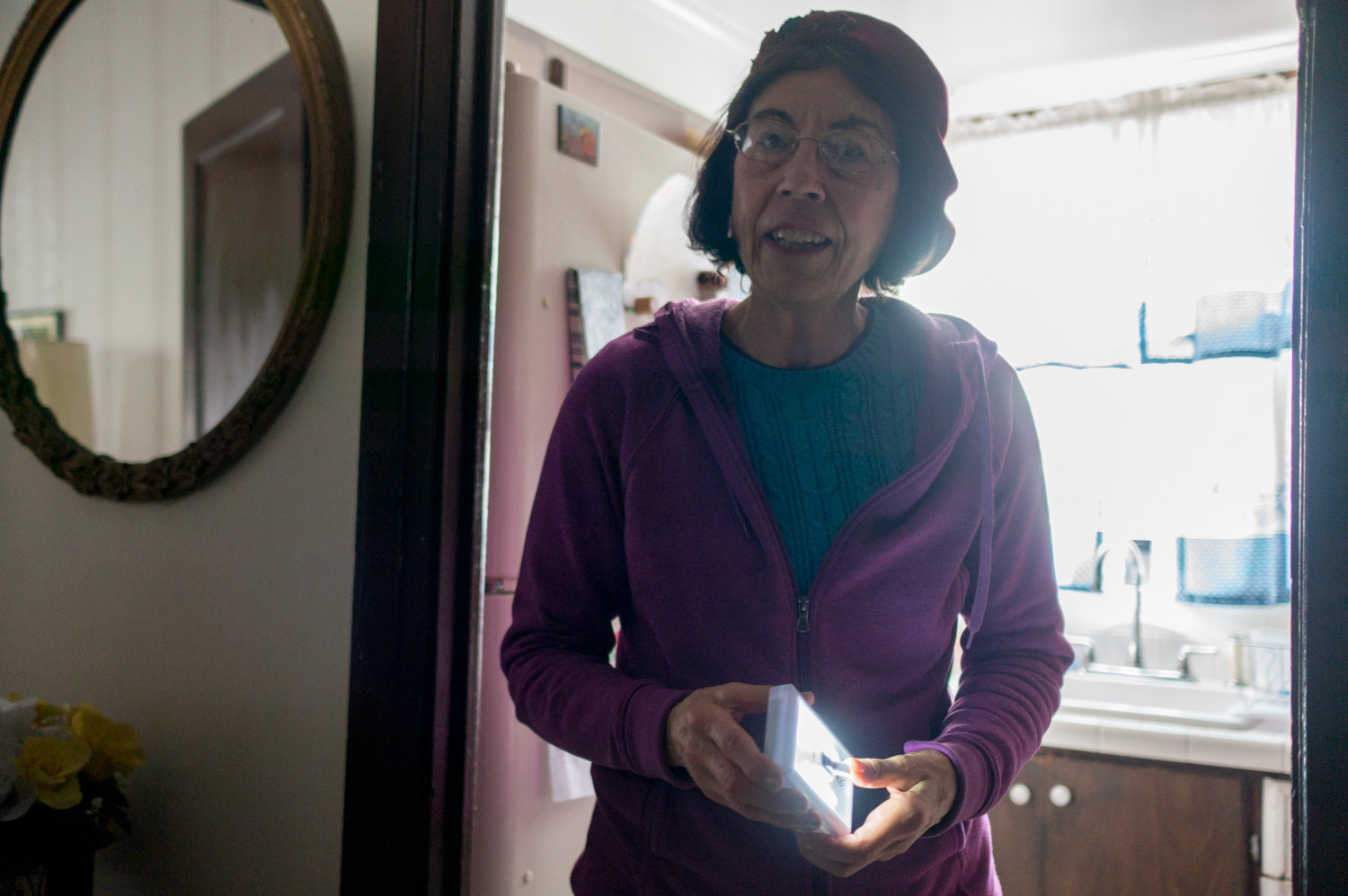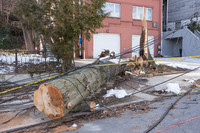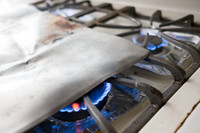Sparks fly over power outage
They gathered on Sylvan Avenue, their shadows long in the sinking late afternoon sun, as a sole Con Edison worker arrived on the scene.
He was their first glint of hope in nearly a week for these residents, who as of last Friday have lived without power since March 2, when Winter Storm Riley toppled a massive tree between West 256th and West 254th streets. It not only took down power lines, it blocked access to cars and pedestrians, creating a nightmare for these families.
“It’s dark and there’s no heat,” said Eileen Fisher, bundled in layers, standing just inside the entrance of her home on the 5400 block of Sylvan.
Outside, collapsed wires draped on barren, sawed-off branches strewn about the sidewalk, the tangled aftermath of the wreckage still waiting to be cleared.
Fisher’s block represents just a small sliver of a much broader problem at a time when late winter storms have wreaked havoc on communities throughout the northern regions.
And on March 7, the northeast braced for the second battering in less than a week, with New York, Massachusetts and New Jersey declaring states of emergency with thousands of flights canceled.
Storms of this caliber can be deadly — the earlier nor’easter that raged March 2 killed at least eight, authorities said — and knocked out power to millions.
That’s been a problem for some residents in the northwest Bronx, prompting several elected officials — including U.S. Rep. Eliot Engel, Assemblyman Jeffrey Dinowitz and Councilman Andrew Cohen — to pen a letter to Public Service Commission chair John Rhodes, who oversees ConEd.
“It is unacceptable for anybody to be without power for an entire week,” the lawmakers wrote in a March 7 letter.
A cluster of houses on Sylvan was hit hard, as were others on surrounding streets in an otherwise idyllic pocket of North Riverdale. And while the power for several residents was restored by Sunday — thanks to the one ConEd worker who pulled off a 16-hour solo shift — others said that as of last Friday, they were still freezing in the dark.
Another chilly night
As afternoon crept toward night, Kevin Kenny fired up a generator to heat his parents’ home against the impending chill. His father was still in Montefiore hospital, he said, where he’d been treated for pneumonia. His mother, meanwhile, had been staying with his sister in Rockland County.
“I don’t get it,” Kenny said. “You can’t get through (to ConEd) on the phone. You call and call and call, and it’s just, you’re on hold. There’s no one coming by. That’s how everybody feels. We’re left out in the cold here.”
Huddled in their kitchen, Fisher and her husband William used a match to light burners of their stove, covering the blue flames with a tin sheet to prevent the draft gusting in through the front door from blowing them out.
They’d purchased LED lights to navigate the dark. With their fridge out of commission, they survived on canned tuna, vegetables, peanut butter and jelly sandwiches, and fruit while keeping their milk nestled in the snow in their front yard “so we can have coffee,” Fisher said.
“I can’t believe that this is still going on,” she added.
Uncertainty of when ConEd would ultimately restore power made things worse.
“There’s no way of knowing,” William said. “They tell you what they want to tell you. You get the loop.”
As of last Friday evening, a map on ConEd’s website showed more than 40 outages just along Sylvan south of Faraday Avenue, down to where the street terminates north of West 254th. Most of those outages were slated to be resolved by 11 that night.
Little hope
But the Fishers had little hope since ConEd failed to meet a previous deadline to restore power by the previous Tuesday.
Several of their neighbors, meanwhile, had gone to stay with family or friends. This wasn’t an option for the Fishers, who have children living in different parts of the world.
“We don’t have a nice place in New York we can just quickly go to,” William said.
“People on the street are saying ConEd is spread thin because of the disaster in Puerto Rico,” Fisher said, as well as additional damage from the March 7 storm. “But it shouldn’t be a choice. There should be enough people for both situations. Everybody’s second-guessing ConEd.”
But Kate Bommarito, whose husband works as a chief high voltage lineman for the company — but she doesn’t speak for them — said ConEd isn’t the sole culprit.
“Keep in mind that ConEd pulls people away from their families at all hours of the day and night to fix these things as quickly as possible,” Bommarito said, in a comment in a popular Riverdale Facebook group. “Also, in some situations like this, ConEd can respond fast, but will then get stuck waiting for the proper tree removal services. And if they slack, it reflects on ConEd, even though the linemen were all prepared to get your power back quickly.”
While Rhodes had yet to respond to the letter as of last Friday, his commission already is looking into the matter under the direction of Gov. Andrew Cuomo, said James Denn, the commission’s public information officer.
“The PSC is undertaking a thorough and comprehensive review of the utilities’ storm performance,” Denn said, in an email.
The commission will examine everything from ConEd’s preparation and execution during storms, Denn said, to its coordination with local governments and communications with customers.
“The findings could lead to significant penalties,” Denn said. “We will focus on remedies after our investigation is complete.”
Make power important again
One particular sore point for Fisher was uncertainty over how ConEd sets its priorities when working to restore power to several locations in the wake of multiple storms.
“The idea we’ve been bumped down to the bottom again infuriated me,” she said.
Such decisions are not arbitrary, however. ConEd prioritizes restoring power to critical customers like police and fire stations and hospitals, according to the utility company.
“We also make repairs in a way that will bring the largest number of customers back quickly,” ConEd spokesman Allan Drury said, in an email.
Most of the repairs that still needed to be made as of last Friday from the March 2 storm did not fall into that category.
“That’s why the last phase of a restoration can take longer,” Drury said. “We’re sending crews out to locations where they have to set up their work zone, re-string wiring, etc. — the same work they’d do earlier on in a restoration. But now their good work will bring back a smaller number of customers.
“In fact, in many instances, the work may bring back only one or two.”
Of about 140,000 customer outages caused by the March 2 storm, ConEd restored all but 6,500 by the time the second storm hit March 7, Drury said — many of which were smaller groups. But with the onslaught of the second storm, workers had to be pulled off the streets, costing the company time as more customers lost power.
“Our crews have worked around the clock doing dangerous, arduous work,” Drury said. “A restoration of this scale takes days, not hours.”
As the ConEd worker cordoned off areas of fallen branches and damaged wires, Michael Shaorshadze walked his stepmother’s dogs. During the outage, his family had packed into his grandmother’s home, which still had power.
“Five people living in a single-bedroom apartment,” Shaorshadze said, “so it gets really cramped.”
He recalled a joke a friend told him, which at that moment resonated.
“Promises made of returning your power is like a mirage in the distance,” Shaorshadze said. “The closer you get, the further it recedes.”

